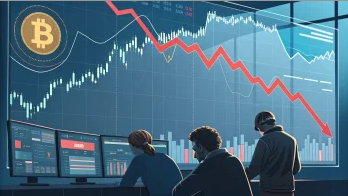There are nearly 50 million consumers in the U.S. without a firm credit score, leaving them financially fragile. Those same people are impacted by a massive IRS backlog of paper 1040s, leading to delayed tax returns. However, a few initiatives could help turn those circumstances around.
Even if you generally feel well-to-do, it’s a tough market for buying a home. Or renting an apartment. Or financing a car.
To make it even tougher, in order to do those things, you don’t just need capital. You need a good credit score. Lenders need to be able to look at your credit history and remain confident. “Hey, this person looks like they’ll be willing and able to pay back a loan.”
Lenders who fail to take this step are often predatory at worst or irresponsible at best.
Good credit serves as a passport to entry into the U.S. market.
Good credit can also get you better interest rates when you go to buy that house or car or attend college. You can even ask for a higher credit limit on a card.
There are other benefits to having good credit, too. You’ll have opportunities to waive upfront cell phone plan fees or get a second look from an employer.
But not everyone has access to credit scores.
According to Oliver Wyman research, at least 28 million consumers in the U.S. are credit invisible. These are defined by the Consumer Financial Protection Bureau as not having credit records at any of the three nationwide credit reporting agencies (NCRAs): Equifax, Experian, and TransUnion.
There’s also a group of 21 million consumers with “unscored” or “unscorable” credit records. This means they don’t have enough recent information to carry a credit score.
We’re not talking about fixing your credit after making a few bad decisions. We’re talking about not having a score to start with.
These individuals are at a distinct disadvantage. Most are unable to build wealth through homeownership, get jobs, go to college, or start a business. Many can’t even rent an apartment near their place of work. And according to the CFPB, a greater percentage of Black and Hispanic Americans are credit invisible than are white Americans.
Many credit invisibles face multiple obstacles.
To make matters worse for those individuals, the IRS faces a backlog of paper 1040s. According to The National Taxpayer Advocate (NTA), Erin Collins, the IRS fell almost a year behind in processing paper tax returns during the Covid-19 pandemic.
“The reason paper returns are so challenging is that the IRS still has not implemented technology to machine read them, so each digit on every paper return must be manually keystroked into IRS systems by an employee,” Collins writes.
Those delays have caused financial hardship and impacted loan applications for those who needed to show proof of current tax filing.
In order to break the bonds of generational poverty and ensure equitable opportunities for all Americans, credit and timely tax refunds need to be more readily available to all. Here’s how a couple of companies are making that happen.
Consumers are now able to build retroactive credit histories.
Almost 50 million adults in the U.S. (about 1 in 5) are credit invisible or unscored. Oliver Wyman research details more about those individuals.
Immigrants and refugees are less likely to have a credit history simply because they’re newer to the U.S. credit ecosystem. People under the age of 25 are less likely to have a credit history. This is typically the case if they haven’t had access to student loans, student credit cards, or guaranteed credit from a friend or family member. This is especially true for those from low-income areas.
Without credit scores, these individuals aren’t able to build wealth through traditional means. Those rites of passage include buying property, going to college, or getting a small business loan.
These activities create the possibility of building a legacy of wealth for generations to come. Wil Lewis, chief diversity, equity, and inclusion officer for Experian, believes that in order to change this, brands (including Experian) can give consumers opportunities to add less traditional credit data to their dossier that give a more complete picture of their financial situation to lenders.
First steps include opening a credit report.
For those who have no credit reports to build from, Experian Go offers the first step toward Experian Boost. This program allows credit invisibles to create their first Experian credit report. They can then move on to add past payments to boost their credit.
Once they have a score, Experian has expanded Experian Boost. They now allow people to add more modern payments people are already making to their credit reports.
- Paying for Netflix? Add it to your credit score.
- A cell phone bill?
- Rent?
- Utilities?
All those on-time payments can count toward consumers’ credit scores and boost them higher. The qualifying purchases are either basic necessities or very small luxuries.
For example, a monthly Hulu payment is as low as $6.99. If you’re already going to be shelling out the cash, whether on utilities or HBO, why not have it benefit you?
The program works by connecting to individuals’ banks, credit cards or (most importantly for credit invisibles) service providers. It searches as far as two years back for accounts with payment histories that will raise one’s FICO® score.
Technology companies support government agencies’ move to digitization.
We live in a world of ubiquitous smartphones, Bluetooth technology, touchscreens, and apps. Sometimes, it feels incongruous to see companies continue to process paperwork manually.
Yes, digitization for a massive company is a large undertaking. The IRS is one such large organization that hasn’t yet switched to fully automated scanning technology for entering tax returns.
But the technology is available. According to the National Taxpayer Advocate, it’s time to use it.
In 2007, various federal agencies got together to create the Federal Agencies Digital Guidelines Initiative (FADGI) in order to establish sustainable guidelines for managing digital content. One FADGI member, the National Archives and Records Administration (NARA), recently hosted a webinar. In it, they shared what they learned about taking on a massive internal digitization project.
Preliminary panel findings highlight the need for rapid digitization.
The panel was sponsored by ibml, a global market leader in high-volume, mission-critical intelligent document processing (IDP) solutions.
Panelists shared insights that are critical to a successful move to digitization in government processes. The panel addressed M-19-21, a government memo about transitioning to electronic records that states:
The Federal Government spends hundreds of millions of taxpayer dollars and thousands of hours annually to create, use, and store Federal records in analog (paper and other non-electronic) formats…the processes that create analog records increase the burden on citizens. It requires them to conduct business with the Government in person or by mail, rather than online.
The memo directs government agencies to move to fully electronic records. Government agencies such as the IRS need to prioritize security, making digitization more complex.
Yet as staffing issues plague the IRS (and taxpayers rely on timely returns and expect their money to be well-spent) it makes sense to prioritize the move to a less hands-on process.
Various tools available from ibml and other information management companies are enabling this move to digitization, which in turn will help consumers.
Education around credit and taxes makes a difference in building wealth.
In addition to moving toward digitization, education around taxes can help increase equitable opportunities for taxpayers.
The Covid-19 pandemic shook up filing deadlines and added off-the-wall income to the mix, making individual taxes more complex. Moving forward, continued education and support for individuals from underserved areas filing tax returns will be an important part of building equitable practices in the tax world.
When individuals are able to open small businesses (thanks to building a strong credit history), they’ll also need to understand how to get the most out of their business tax returns.
Having a financial planner or accountant can help businesses manage their taxes. This means they make decisions on when and how to move money in order to reduce taxes and optimize their returns.
Not having access to this knowledge means losing out on wealth. Consequently, publicly available and reasonably priced small business support is also an important component of creating equity among consumers.
In the same way, understanding how to build great credit can be an equalizer when it comes to opportunity.
Here’s how to make a difference as a lender or consumer.
In addition to education and support around taxes and credit, there are steps that individuals can take to improve access and opportunities for building wealth.
1. Make a difference as a business owner or lender.
If you’re a business owner or lender working with a credit invisible, take a look at other types of data to evaluate the creditworthiness of that consumer.
Perhaps they’ve paid back a nontraditional loan, or they own an asset other than a mortgaged home or financed car. If an individual has proved that they are motivated and able to repay loans, they might not actually be a high risk for a loan.
If you collect regular payments directly with consumers, consider if there’s a way you can report their payments to credit bureaus, such as through Experian Boost.
These small actions can help connect the dots between responsible consumers and the limited data that filters up to credit bureaus.
2. Make a difference in your own credit score.
If you don’t have a great credit score, or you don’t have a credit score at all, start reading about how to build credit.
There are many simple, concrete steps you can take to get started. This is especially true if you have anyone in your life who is willing to take you on as an authorized user. They might even agree to co-sign a loan for you.
If you are on your own, work to faithfully pay your rent and utilities. Look into opening a credit builder loan and consider a secured credit card.
Remember that until you have a good credit score, any loans or cards you qualify for will come with a much higher interest rate. So borrow wisely and use your cards responsibly.
Check your local library, city, and university for free resources on financial management and tax support. Likewise, use the resources you can already access and unlock more resources for your future.
















